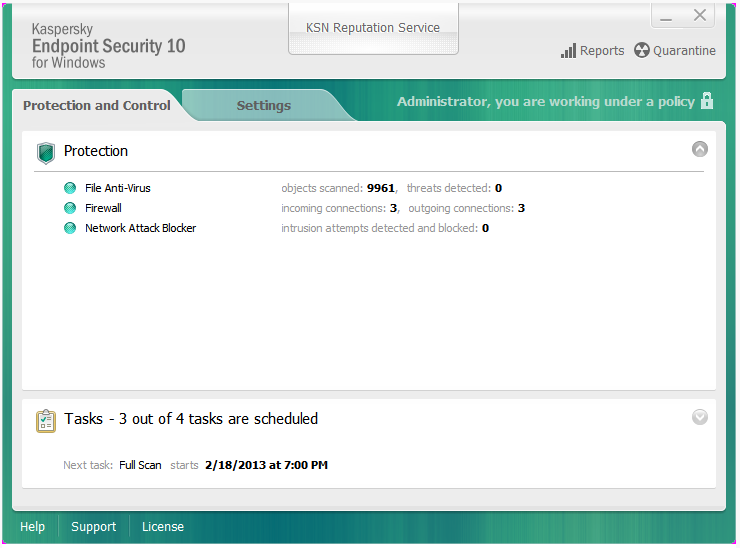

- KASPERSKY ANTIVIRUS FOR WINDOWS SERVERS ENTERPRISE EDITION INSTALL
- KASPERSKY ANTIVIRUS FOR WINDOWS SERVERS ENTERPRISE EDITION WINDOWS 10
The table in this section summarizes the features and capabilities that are actively working or not, according to whether Microsoft Defender Antivirus is in active mode, passive mode, or disabled/uninstalled. For example, real-time protection works when Microsoft Defender Antivirus is in active or passive mode, but not when Microsoft Defender Antivirus is disabled or uninstalled. Microsoft Defender Antivirus can affect certain capabilities in Defender for Endpoint, too. How Microsoft Defender Antivirus affects Defender for Endpoint functionalityĭefender for Endpoint affects whether Microsoft Defender Antivirus can run in passive mode.
KASPERSKY ANTIVIRUS FOR WINDOWS SERVERS ENTERPRISE EDITION WINDOWS 10

In those cases, set Microsoft Defender Antivirus to passive mode to prevent problems caused by having multiple antivirus products installed on a server.
KASPERSKY ANTIVIRUS FOR WINDOWS SERVERS ENTERPRISE EDITION INSTALL
( 2) On Windows Server 2019, Windows Server, version 1803 or newer, Windows Server 2016, or Windows Server 2012 R2, Microsoft Defender Antivirus does not enter passive mode automatically when you install a non-Microsoft antivirus product. Microsoft Defender Antivirus must be disabled (manually) Microsoft Defender Antivirus must be set to passive mode (manually) The following table summarizes what happens with Microsoft Defender Antivirus when non-Microsoft antivirus/antimalware solutions are used together or without Microsoft Defender for Endpoint. Microsoft Defender Antivirus and non-Microsoft antivirus/antimalware solutions On Windows Server 2016, you might see Windows Defender Antivirus instead of Microsoft Defender Antivirus. Set its value to 1 (which sets the registry key's value to true), and select Hexadecimal for its base. To use the registry key, navigate to HKEY_LOCAL_MACHINE\SOFTWARE\Policies\Microsoft\Windows Defender, and set or create a DWORD entry called DisableAntiSpyware. ( 1) On Windows Server, if you are running a non-Microsoft antivirus product, you can disable Microsoft Defender Antivirus by using Group Policy to turn off Microsoft Defender Antivirus, or by using the DisableAntiSpyware registry key. The following table summarizes what to expect:Ī non-Microsoft antivirus/antimalware solution This section describes what happens with Microsoft Defender Antivirus and non-Microsoft antivirus/antimalware products on endpoints that are not onboarded to Defender for Endpoint. Antivirus protection without Defender for Endpoint Windows Defender is also offered for consumer devices on Windows 8.1, although Windows Defender does not provide enterprise-level management. In Windows 8.1, enterprise-level endpoint antivirus protection is offered as System Center Endpoint Protection, which is managed through Microsoft Endpoint Configuration Manager.

Microsoft Defender Antivirus is only available on devices running Windows 10 and 11, Windows Server 2022, Windows Server 2019, Windows Server, version 1803 or newer, Windows Server 2016, and Windows Server 2012 R2.


 0 kommentar(er)
0 kommentar(er)
